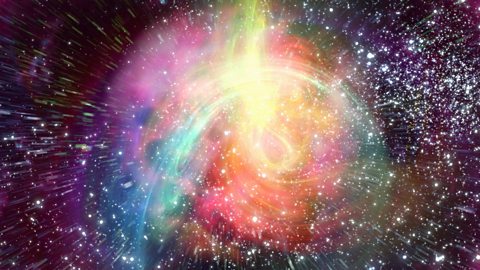The Big Bang
Scientists have gathered a lot of evidence and information about the Universe.
They have used their observations to develop a model called the Big Bang to help explain its formation and evolution.
The theory states that about 13.8 billion years ago all the matter in the Universe was concentrated into a single incredibly tiny point.
From this tiny point, the whole Universe expanded outwards to what exists today.
- The Universe is thought to have originated 13.8 billion years ago from a very small, extremely hot and dense region called a singularity. The Big Bang was a massive expansion that blew space up like a gigantic balloon.
- Initially the universe expanded rapidly. Rapid expansion is always accompanied by cooling, so, as the Universe got bigger, it cooled down. This enabled protonSubatomic particle with a positive charge and a relative mass of 1. The relative charge of a proton is +1., neutronUncharged subatomic particle, with a mass of 1 relative to a proton. The relative charge of a neutron is 0. and electronSubatomic particle, with a negative charge and a negligible mass relative to protons and neutrons. to form.
- Further expansion and cooling allowed protons and neutrons to combine to form nuclei.
- The universe continued to expand, although now more slowly. As it cooled still more, electrons combined with neutrons and protons to form atomAll elements are made of atoms. An atom consists of a nucleus containing protons and neutrons, surrounded by electrons. of hydrogen.
- The force of gravity acted on the atoms of hydrogen, pulling them together into bigger and bigger clumps.
- Some 400,000 years later the first stars form from the clumps of hydrogen and begin to light-up the Universe.
Evidence for the Big Bang includes:
- all other galaxies are moving away from us;
- the further away a galaxy is, the faster it is moving away.
These two features are found in explosions - the fastest moving objects end up furthest away from the explosion.
Scientists have also detected cosmic microwave background radiation or cosmic microwave background radiationElectromagnetic radiation, detected throughout the Universe that is left over from the Big Bang. CMBR has a wavelength of about 2 mm..
This is received from all parts of the Universe and is thought to be the heat left over from the original explosion.
